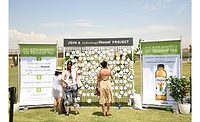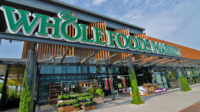Natural, organic retailers address price point concerns
Channel receiving increasing competition from eCommerce




Just as SKU proliferation has allowed consumers more choices for their food and beverage purchases, the retail channel market has seen its own proliferation of new stores for these products. Natural and organic retailers, also referred by some analysts as fresh format stores, are one channel that has presented competition to traditional supermarket share.
According to Long Grove, Ill.-based Willard Bishop, an Inmar analytics company, fresh format stores are among the Top 3 segments experiencing sales increases. In the market research firm’s 2015 “The Future of Food Retailing” report, fresh format, eCommerce and limited-assortment segments outpace every other segment by a minimum of two to one.
“Fresh format stores continued to experience a substantial sales growth of 13.5 percent to $15.9 billion and the largest increase in stores among all formats to almost 1,200 in 2014, proving that shoppers are still looking for fresh, healthful products,” the report states. “The Fresh Market and Sprouts enjoyed double-digit sales growth for the second time over the past two years. In 2015, Sprouts is focusing on improving ingredients and getting a broader merchandise offering. Sprouts is also working on a new deli format (i.e., front-facing salad bar, protein case, juice offering and sandwich station), which it’s testing in one store and plans to rollout to more stores in 2016.”
Earlier this year, Phoenix-based Sprouts Farmers Market announced that the retail chain will open 36 new stores in 2016. Also, in its second quarter financial report, the company stated that net sales were up 14 percent, totaling $1 billion, in comparison to 2015. Comparable store sales growth also was up 4.1 percent from 2015 and 8.9 percent on two-year comparable store sales growth.
“Sprouts’ healthy living for less business continues to resonate with customers as we grow coast to coast,” said Amin Maredia, chief executive officer of Sprouts Farmers Market, in a statement. “Despite the deflationary environment, our team continues to produce solid comparable store sales growth through improved traffic of 3.5 percent and increased tonnage. We remain laser-focused on our strategic priorities to drive performance today while continuing to invest in team members, technology and infrastructure for sustainable long-term growth.”
In its third-quarter financial report, Austin, Texas-based Whole Foods Market Inc. noted that total sales grew to a record $3.7 billion. Year-to-date, total sales were up 2.3 percent totaling $12.2 billion for the 40 week period ending July 3.
However, Bob Goldin, vice chairman of Chicago-based Technomic, a Winsight company, notes that although natural and organic retailers had a good year, it was not as strong in comparison to previous years. Among the reasons for this deceleration is competition from conventional markets as well as price points, he notes.
“The thing to keep in mind here is the perception about price points,” Goldin says. “These natural retailers are working very, very hard to overcome that, but that’s been a bit of a limiting factor to a certain extent.”
Because of higher price points, typical natural and organic shoppers have been higher-income consumers but that soon could change, Goldin says.
“They tend to be more urban or really established suburban … that has been the sweet spot of that market,” he says. “Whole Foods, in particular, has been opening locations in food deserts, which is going to be very, very interesting to see how they do in those markets. I think demand is most pronounced among affluent consumers generally trending a little younger than the population at large, so these have a ‘middle-America’ type. I do expect some of that to change in the next couple of years as fresh, natural health and wellness becomes a little more mainstream and price points come down.”
Chicago-based Euromonitor International also highlights this perception challenge for Whole Foods Market in its April report “Health and Wellness in the US.”
“Whole Foods, a popular retailer in the U.S., which has been pejoratively nicknamed ‘whole paycheck,’ has taken deliberate steps in 2016 to lower its prices to shake the aforementioned moniker,” the report states. “The move to lower prices comes at a time when big-box retailers are increasingly investing in organic offerings.”
Whole Foods Market is addressing this through its 365 by Whole Foods Market stores, which offer convenience and everyday low prices on natural and organic products that meet the company’s standards for quality, it says.
Following the opening of the company’s second 365 store, John Mackey, co-founder and co-chief executive officer of Whole Foods Market, stated: “Designed around affordability and convenience and supported by enhanced digital experiences, our 365 stores deliver a fresh new format to the marketplace. Through lower capital and operating costs, we are able to offer great values to our customers, and the response has been overwhelmingly positive. Our 365 stores are firsts for us in so many ways, from a streamlined operating model, to centralized buying, to auto-replenishment of inventory. We are already taking advantage of our many learnings to shape and evolve not just future 365 stores, but Whole Foods Market stores as well.”
Among the states that Whole Foods Market has or will open 365 locations are California, Washington, Texas, Ohio, Illinois, Indiana, Georgia and Florida.
New age success
Within the beverage space, the categories that have found success in fresh format stores are alternative, new age beverages, Technomic’s Goldin explains.
“It’s all these alternative beverages, the cold-pressed juices and enhanced waters and fresh-brewed iced teas and smoothies,” he says. “… The number of alternatives they offer very, very little overlap with what they sell there [compared] with what is sold in traditional supermarkets. When they do sell soda, it’s naturally sweetened, natural sweeteners, natural ingredients and a very heavy focus on local and emerging brands.”
In Chicago-based Mintel’s January report “Bottled Water – US,” the market research firm notes the category’s success across all channels, including natural retailers. However, the market research firm questions whether it’s due to the category’s growing success or the channel’s increasing exposure.
“Bottled water at natural channels saw strong year-over-year sales growth for the 52-weeks ending October 2014 and October 2015,” the report states. “However, the origin of bottled water sales growth at natural channels is uncertain. Strong growth at natural channels could be the result of the bottled water category trending and consumers increased purchases, or it could be due to a greater presence of natural retail locations as their popularity grows.”
Among bottled water segments within the natural channel, Mintel found that the enhanced water segment accounted for the largest share
(31.1 percent). Packaged non-carbonated water, with 25.4 percent market share, was the No. 2 bottled water segment within the natural channel.
The eCommerce effect
Going forward, analysts expect natural and organic retailers to remain competitive with traditional grocery formats.
Willard Bishop’s report forecasts fresh format stores to continue their growth trajectory at a rate of 11.7 percent annually through 2019. This is slightly below the eCommerce market, where it anticipates a 12.1 percent annual growth rate during that same time period.
Although eCommerce for food and beverages is coming from a smaller base, analysts expect that this channel could impact natural and organic retailers going forward.
“There’s been a tremendous amount of interest and growth off of a small base from this whole meal kit delivery business, which I think some of these companies might end up getting involved in,” Technomic’s Goldin says. “There’s also a whole host of food online. ECommerce is in the early stages, but I think we’re going to see more of it.”
Although it accounts for a very small portion of the market, Goldin adds that coffee-of-the-month and wine-of-the-month clubs are beverage categories that could find success through eCommerce.
In its new 2016/17 U.S. Food Industry Universe analysis, Technomic estimates that fresh format stores will be up 9.1 percent in 2017, while eCommerce will be up 19.8 percent next year.
Although Amazon and Jet have become well-known eCommerce challengers to traditional grocery markets, the natural and organic retail market has seen the introduction of its own challengers.
Founded in 2014, Thrive Market, Los Angeles, offers wholesome products at wholesale prices through its membership subscription services. Membership fees are $60 a year, which allows access to health-and-wellness products that can be as much as 50 percent less than traditional retail prices, the company says. As of Sept. 2, the company has more than 300,000 paid members and generates $200,000 sales a day, on top of its membership fees, it says.
Within the ready-to-drink beverage space, brands available on Thrive Market include Pacific Foods, Sambazon, Zico, Orgain, Svelte and Honest Kids. The eCommerce site also has a number of coffee and tea brands including Yogi Tea, Kicking Horse Coffee, Numi Organic Tea, Califia Farms coffee concentrates and Tazo Tea.
Despite the increased competition for natural and organic retailers, analysts remain optimistic about the channel’s future.
“It’s still a small segment with lots of opportunity for growth, and I think … they’re going to look at different store formats, merchandise, localization of merchandise mix, a whole bunch of different areas,” Goldin says. BI
Looking for a reprint of this article?
From high-res PDFs to custom plaques, order your copy today!








